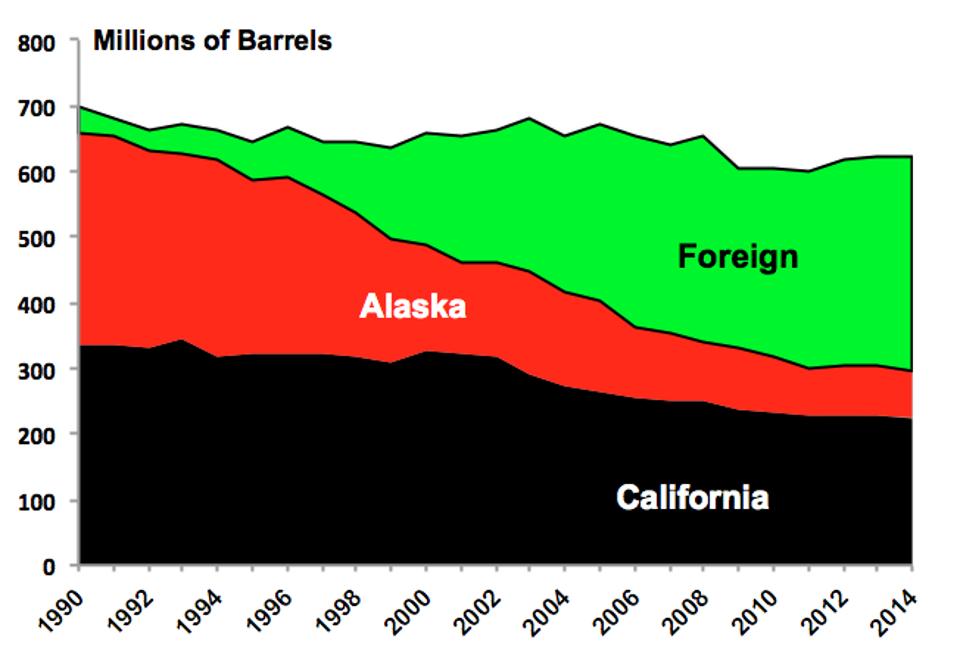California: Saudi Arabia’s Golden State

The next time you fill up your car or truck at the gas station in California, there’s a strong likelihood the gas was imported from Saudi Arabia.
That’s right. According to WSPA, the Western States Petroleum Association, the state that makes it a point to emphasize the moral high ground of women’s rights, imports 52% of its oil from foreign sources; 36% of that coming from Saudi Arabia. Saudi Arabia, the same country that doesn’t allow women to drive, open a bank account or, in certain circumstances, vote. And let’s not get started with their views on gay rights.
READ MORE: 5 Things You Wouldn’t Believe Women Can’t Do in Saudi Arabia
It’s a shocking revelation that makes California’s politicians and business leaders appear rather hypocritical.
Source: California Energy CommissionAnd the why of all of this will, no doubt, leave you shaking your head as well. California's strict environmental crude oil laws hinder access to heavier grades of oil, eliminating any crude coming from the tar sands of Canada. The Golden State favors the lighter oil imports from OPEC.
Though lighter oil is also available domestically, because of California’s lack of pipelines and environmental push against rail, truck, and barge, the Golden State can’t access the less carbon-intensive Bakken crude coming from America's heartland either.
Environmentalists have to agree: No matter how clean California wants its petroleum-based fuels to be, the real "sustainability" problem is a law that favors OPEC and Middle Eastern oil producers over domestic and Canadian ones.
The state certainly presents some unique challenges with its environmental activism. The President of WSPA, Cathy Reheis-Boyd, spoke with IVN about the unique challenges the state represents.
“California is still going to be a very difficult place to do business because of the regulations. We embrace them though and respect them. But the real challenge is overcoming the 'let's get off oil' agenda,” she said.
So just how much oil does California consume? A lot. In terms of world consumption, China ranks #1, the U.S. is #2, and the state of California comes in at #3. In dollars and cents, Saudi Arabia makes billions of dollars off the Golden State’s petroleum needs.
Reheis-Boyd said, “California refines two million gallons every hour of every day. 96% of our travel needs rely on petroleum.” In the state of California, 26 million cars move 39 million people, who drive 200 billion miles a year.
Removing Middle East oil from the state of California might be on the agenda for President-elect Trump. He certainly made that point on the campaign. His rhetoric has created the leverage that very likely played a role in OPEC’s decision to trim its output.
Reheis-Boyd said about all these moves,“These are good indications that flexibility for the refining industry will increase. And that’s key. The more flexibility you have to get the product to market, the better it is as an economic growth engine.”
Where and how this plays out is yet to be determined, but it is very clear: significant chess pieces are in play and massive changes could be coming to California as it relates to the oil and gas industry.
Certainly limiting our state’s dependence on foreign oil, particularly when we have an oil renaissance happening in this country, would be a natural place to start. And if California can reduce the amount of money it sends to countries that don’t share its high regard for human rights -- that might just be a hidden benefit that should be at the forefront of the discussion.
Photo Credit: corlaffra / Shutterstock.com





